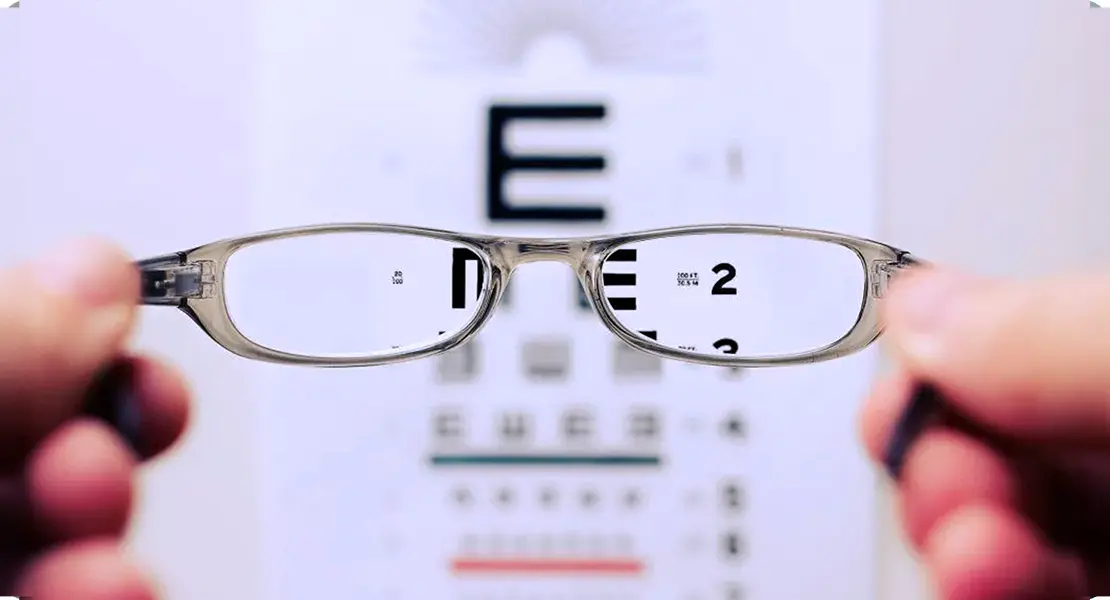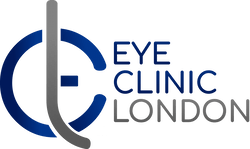Does ICL Surgery Give You 20/20 Vision? What You Can Expect

If you’re thinking about Implantable Collamer Lens (ICL) surgery, chances are one question is at the front of your mind: will it give me 20/20 vision? The phrase “20/20” has almost become shorthand for “perfect eyesight,” and it’s understandable to want that outcome if you’re considering a permanent alternative to glasses or contact lenses.
The truth, however, is slightly more nuanced. While ICL surgery offers outstanding results for the vast majority of patients, not every single person walks away with textbook 20/20 vision. Outcomes depend on a mix of factors — from your prescription and eye health to the precision of your treatment plan and the technology used during surgery.
In this article, we’ll walk through how ICL surgery works, what the data says about success rates, why some people achieve 20/20 (or even better), and why others may still need very mild correction after surgery. By the end, you’ll have a clear idea of what to expect — and why the procedure remains one of the most effective ways to dramatically reduce dependence on glasses or contact lenses.
Understanding What “20/20 Vision” Really Means
Before diving into outcomes, let’s take a moment to clarify what 20/20 vision actually represents. The term comes from the Snellen chart used in eye tests, where you read rows of letters at a standard distance of 20 feet (about 6 metres in the UK).
If you have 20/20 vision, it means you can see at 20 feet what a person with normal eyesight can see at 20 feet. In other words, your visual clarity is considered “normal” without correction. But here’s the important part: 20/20 doesn’t mean perfect vision. Some people can see even better, with results like 20/15 or 20/10, which means they can see at 20 feet what most people need to stand closer to read.
So when patients ask if ICL guarantees 20/20, they’re really asking whether the surgery can correct their eyesight to a “normal” or “better than normal” level — and in most cases, it certainly can.
How ICL Surgery Works

ICL surgery is different from laser vision correction procedures such as LASIK or PRK. Instead of reshaping the cornea, a surgeon implants a tiny, biocompatible lens made of collamer into the eye, just behind the iris and in front of the natural lens.
The lens works much like a permanent contact lens inside your eye. It bends light correctly onto the retina, eliminating the blurriness caused by short-sightedness (myopia), and in some cases astigmatism. The key advantage is that your cornea remains untouched, which makes ICL a great option for people who aren’t suitable for laser surgery — for example, those with thin corneas or higher prescriptions.
The procedure itself is relatively quick, usually taking 20 to 30 minutes per eye, and recovery tends to be rapid. Many patients notice clearer vision within hours, and improvement continues over the first few days as the eyes settle.
What the Clinical Studies Say About ICL Outcomes
Clinical evidence paints a very positive picture of ICL surgery. Multiple long-term studies show that the vast majority of patients achieve 20/20 vision or better after treatment.
For instance, research published in peer-reviewed ophthalmology journals consistently finds that around 85–95% of patients reach uncorrected visual acuity (UCVA) of 20/20, depending on their starting prescription. Even higher percentages — often over 99% — achieve at least 20/40, which is the legal standard for driving without corrective lenses in many countries.
It’s also worth noting that many patients report their quality of vision feels sharper than with glasses or contacts, thanks to the optical quality of the collamer lens and the absence of issues like dry eye (a common side effect after laser surgery).
Of course, “averages” don’t tell the whole story. A small proportion of people may need very mild glasses for specific tasks — like night driving — but overall satisfaction rates remain extremely high.
Why Some Patients Achieve Better Than 20/20

Interestingly, a good number of patients don’t just reach 20/20 after ICL — they surpass it. Achieving 20/15 or even 20/10 is possible, meaning vision sharper than what’s typically considered “normal.”
This happens because the collamer lens can provide excellent optical clarity and contrast sensitivity. Unlike glasses or contact lenses, which sit outside the eye, the ICL sits in a fixed position inside the eye, reducing distortions and giving more natural vision.
For people with very high prescriptions who have relied on thick glasses or strong contact lenses, the improvement can feel life-changing. Everyday activities like reading street signs, using a computer, or even enjoying outdoor views suddenly become effortless without correction.
Factors That Influence Whether You Get 20/20 Vision
While the odds are strongly in your favour, not everyone ends up with 20/20. Here are some of the main factors that influence results:
- Prescription strength – Patients with extremely high myopia may experience huge improvements, but they might not always achieve perfect 20/20.
- Astigmatism correction – If you have significant astigmatism, outcomes depend on whether you receive a toric ICL designed to correct it.
- Eye health – Other eye conditions, such as early cataracts, glaucoma, or retinal disease, can limit the best possible vision.
- Healing response – As with any surgery, the way your eyes heal can vary. Minor differences in recovery may affect clarity.
- Surgical precision – Results also depend on preoperative measurements, surgical planning, and the expertise of your surgeon.
These factors help explain why no clinic can “guarantee” 20/20. What they can do is maximise the chances with careful screening and the latest technology.
Comparing ICL Outcomes with LASIK
If you’re weighing up ICL against laser eye surgery, you might wonder how results compare. Both procedures have excellent track records for delivering 20/20 vision, but there are subtle differences.
LASIK works best for mild to moderate prescriptions and can provide equally sharp vision. However, patients with very high prescriptions, thin corneas, or dry eyes may not be good candidates. In contrast, ICL is particularly well-suited to high myopia and often provides better optical quality in those cases.
Another difference is reversibility. LASIK permanently reshapes the cornea, while ICL can be removed or exchanged if necessary. That flexibility can be reassuring for younger patients or those worried about future eye changes.
What Patients Say About Their Vision After ICL
Beyond clinical studies, patient experiences offer real insight. Many describe the improvement as immediate and dramatic. Waking up the next morning and being able to see the alarm clock without fumbling for glasses is a moment patients often highlight.
Some even say their vision feels more vivid than it did with glasses or contacts, noting better contrast and sharper night vision. Others comment on the comfort of no longer dealing with contact lens dryness, irritation, or the hassle of daily cleaning.
While the odd patient might still need mild correction for certain activities, the overwhelming feedback is that ICL is life-changing in terms of convenience and quality of sight.
Potential Limitations to Keep in Mind
It’s important to keep expectations realistic. ICL surgery is highly effective, but like any procedure, it has limitations. Some patients may notice:
- Halos or glare at night, especially in the first few weeks, though this usually improves over time.
- Residual prescription, meaning a small amount of correction might remain. In some cases, a minor “tune-up” with laser surgery can refine the result.
- Need for reading glasses later in life, as ICL doesn’t prevent presbyopia, the natural age-related change where near vision declines.
Being aware of these possibilities helps you go into surgery with clear expectations and avoids disappointment if your outcome isn’t textbook perfect.
Long-Term Stability of ICL Vision
One of the strongest benefits of ICL surgery is its stability. Unlike contact lenses, which can dry out or shift, the implanted lens remains fixed in place. Most patients enjoy consistently sharp vision for many years.
The material — collamer — is designed to be biocompatible and well tolerated by the eye. Long-term follow-up studies show stable results even after 10–20 years. If your prescription changes significantly over time (which is uncommon in adulthood), the lens can be replaced or adjusted.
This durability is part of why ICL is increasingly popular among younger adults seeking a lifelong solution to glasses or contact lenses.
The Role of Surgeon Expertise in Achieving 20/20
While technology plays a big role, your surgeon’s skill and attention to detail are equally crucial. Precise measurements of your eye, correct lens sizing, and careful placement during surgery all influence the final result.
Choosing a clinic with extensive experience in ICL procedures increases the likelihood of achieving your best possible vision. It’s also important that your surgeon takes time to explain whether you’re realistically likely to achieve 20/20, or whether a slightly less sharp result is more probable due to factors like high prescription strength.
Ultimately, while no surgeon can promise perfection, the right expertise significantly stacks the odds in your favour.
Life After ICL: Beyond Just 20/20
The real goal of ICL isn’t just numbers on an eye chart — it’s the freedom and quality of life that comes with clear, natural vision. Being able to swim without worrying about contacts, travel without packing solutions, or simply wake up and see instantly are all everyday benefits patients enjoy.
Many people find the surgery boosts their confidence and independence, removing the constant reliance on glasses or lenses. For those who struggled with discomfort or limitations from contact lenses, the change can be especially liberating.
So while 20/20 might be the benchmark, the broader impact often goes far beyond.
FAQ: ICL Surgery and Vision Outcomes
- Does ICL surgery guarantee 20/20 vision?
No refractive procedure can promise 20/20 vision, and ICL surgery is no exception. However, clinical studies consistently show that the vast majority of patients do achieve 20/20 or better after surgery. Outcomes depend on several factors, including the accuracy of your preoperative measurements, the skill of your surgeon, and the overall health of your eyes. Even if you don’t achieve a textbook 20/20, most patients notice a dramatic improvement in day-to-day clarity, with vision good enough to comfortably manage work, driving, and hobbies without glasses or contact lenses. - How soon after surgery will I see clearly?
Most people experience noticeable improvement in their vision within a few hours of surgery, often reporting that things look sharper by the evening of the procedure. That said, your eyes may still need time to adjust fully to the implanted lens, and minor fluctuations in clarity are common over the first few days. For some patients, it can take one to two weeks before their vision stabilises completely, though the majority feel confident and comfortable within the first few days. - Can I end up with better than 20/20 vision?
Yes, some patients do achieve what’s known as “super vision,” such as 20/15 or even 20/10 eyesight. This means your vision is sharper than the standard definition of “normal.” The ICL sits inside the eye, close to the natural lens, which allows it to deliver very high optical quality compared to glasses or contact lenses. This positioning reduces distortions and can enhance contrast sensitivity, giving some patients better-than-expected outcomes. - What if I don’t reach 20/20 after ICL?
If you don’t quite achieve 20/20 vision, it doesn’t mean the surgery wasn’t successful. You may still have excellent functional vision that lets you enjoy everyday activities without correction. In some cases, a tiny amount of prescription may remain, which could be noticeable in challenging conditions such as night driving. If this happens and you want even sharper results, your surgeon might suggest a fine-tuning procedure, such as a minor laser enhancement, to refine your outcome. - Is ICL more effective than LASIK for 20/20 results?
Both LASIK and ICL are highly effective at delivering 20/20 vision, but they are best suited to different types of prescriptions. LASIK is typically recommended for mild to moderate myopia and can provide excellent clarity. ICL, on the other hand, is often preferred for higher prescriptions, thin corneas, or patients with dry eyes, where LASIK might not be appropriate. For people with strong prescriptions, ICL sometimes offers sharper results and better night vision than laser correction. - Will ICL surgery fix my astigmatism?
Yes, ICL can correct astigmatism if you are fitted with a toric ICL lens, which is specifically designed to address irregularities in the cornea that cause blurred or distorted vision. These lenses work by compensating for the uneven curvature that glasses or toric contact lenses would normally correct. With the right lens choice, outcomes for patients with astigmatism are comparable to those without, and many achieve clear 20/20 vision after surgery. - How long will my 20/20 vision last after ICL?
One of the main advantages of ICL surgery is the long-term stability of results. Because the collamer lens remains fixed inside the eye, most patients enjoy sharp vision for many years without the fluctuations that contact lenses or glasses can bring. Research shows stability lasting over a decade, with most people maintaining excellent clarity. However, it’s important to remember that ICL does not prevent natural age-related changes, such as presbyopia, which usually starts to affect near vision in your forties or fifties. - Can ICL improve night vision?
Many patients report that their night vision feels clearer after ICL surgery compared to glasses or contact lenses. This is because the lens provides sharp, stable focus without the shifting or drying issues associated with external correction. However, some people do experience temporary halos or glare in low light after surgery, especially in the early weeks of healing. For the majority, these effects fade over time, leaving them with improved confidence when driving or moving around at night. - What are the chances of needing glasses again after ICL?
The chances of needing glasses for everyday activities after ICL surgery are very low, as the procedure is designed to free you from dependence on corrective lenses. That said, some patients may still choose to wear glasses occasionally for tasks that demand extra sharpness, like reading very fine print or driving at night. Additionally, age-related presbyopia will eventually affect everyone, meaning reading glasses are still likely later in life. But for distance and general use, most patients remain glasses-free for years. - Who is most likely to achieve 20/20 vision with ICL?
You’re most likely to achieve 20/20 if you’re generally healthy, have no other eye conditions, and your prescription falls within the treatment range for ICL. Patients without complicating factors such as advanced astigmatism, corneal disease, or retinal issues tend to have the best outcomes. Careful preoperative screening is essential, as your surgeon will take precise measurements and assess whether ICL is the right procedure for you. When matched to the right candidate, success rates for reaching 20/20 are extremely high.
Final Thoughts
So, does ICL surgery give you 20/20 vision? For the majority of patients, yes — and in many cases, it can even deliver sharper eyesight than that. But it’s important to remember that no medical procedure can promise perfection. A small percentage of people may still need light correction, especially for specific tasks, and everyone will eventually face age-related changes like presbyopia.
That said, the benefits of ICL go well beyond the numbers on a chart. The freedom from glasses and contact lenses, the comfort of natural vision, and the long-term stability of results make it one of the most reliable and rewarding options for vision correction today.
If you’re weighing up your options, a consultation with our team at Eye Clinic London will give you a personalised assessment and help you understand your likely outcome. With expert care and the latest technology, you’ll be in the best position to enjoy the clarity and independence that ICL surgery can bring.
References
- Chung, B., Tan, R., Chen, X. & Wang, F. (2024) ‘Ten-year clinical outcomes of V4c Implantable Collamer Lens implantation’, Journal of Refractive Surgery, 40(2), pp. 123-131. Available at: https://pubmed.ncbi.nlm.nih.gov/39142448/ (Accessed: 26 September 2025).
- Albo, C., Miller, J., Walsh, K. & Parkhurst, G.D. (2024) ‘A comprehensive retrospective analysis of EVO/EVO+ ICL: evaluating refractive outcomes in the largest single-centre study of ICL patients in the United States’, Clinical Ophthalmology, 18, pp. 69-78. Available at: https://pubmed.ncbi.nlm.nih.gov/38223817/ (Accessed: 26 September 2025).
- Du, J., Li, H., Zhou, Y. & Tang, X. (2023) ‘Efficacy and safety of Implantable Collamer Lens V4c for the correction of high myopia’, Journal of Cataract & Refractive Surgery, 49(10), pp. 1185-1192. Available at: https://journals.healio.com/doi/10.3928/1081597X-20230908-02 (Accessed: 26 September 2025).
- Ye, Y., Lu, Y., Chen, D. & Zhang, X. (2022) ‘Long-term evaluation of anterior lens density after ICL V4c implantation in patients aged ≥40 years’, British Journal of Ophthalmology, 106(11), pp. 1508-1513. Available at: https://bjo.bmj.com/content/106/11/1508 (Accessed: 26 September 2025).
- Mahmoud, M.S.E.D., Abdelwahab, M.A., El-Hady, S.M. & Elhawary, A.S. (2022) ‘Clinical outcomes of Toric Implantable Collamer Lens (T-ICL) implantation for myopic astigmatism’, The Open Ophthalmology Journal, 16(1), pp. 50-60. Available at: https://openophthalmologyjournal.com/VOLUME/16/ELOCATOR/e187436412204050/ (Accessed: 26 September 2025).

